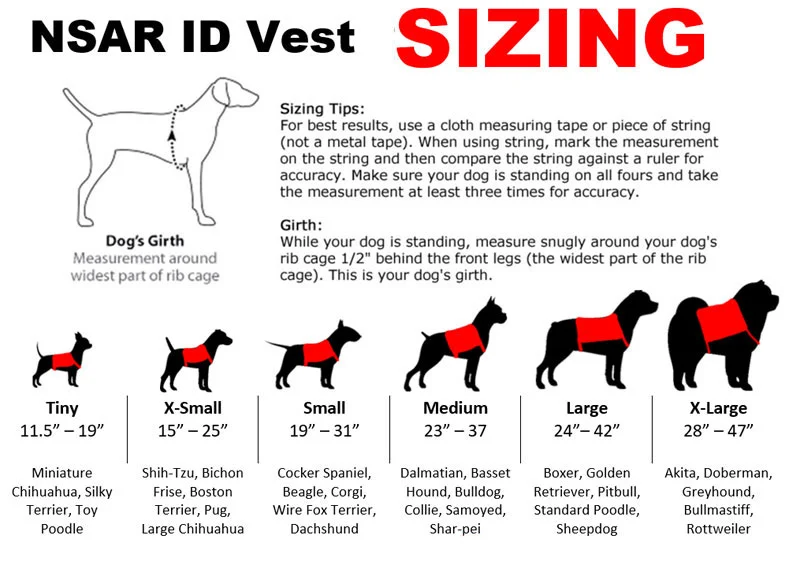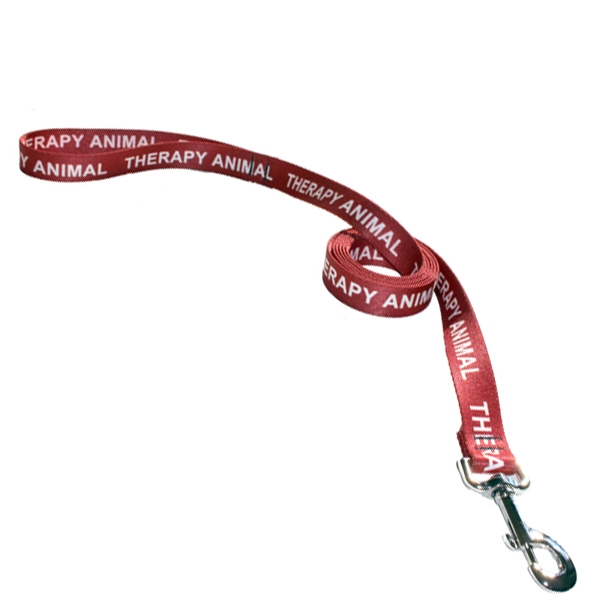
Training your own Alert Service Dog might seem like a difficult task at first, but this article will show you that it is easier than you think.
Dogs love spending time with their people and enjoy learning new things. Once you begin an intelligent and planned training program and are armed with a few tricks to help, you’ll discover training your Service Dog is not only easier than you originally thought, it’s a great way for the two of you to bond have fun!
One key task for all hearing alert service dogs is to bark at specific events, like when someone knocks on the front door. Believe it or not, not all dogs are inclined to bark when you knock on the door. As such, some dogs may need to be taught, if they are going to be an effective alert mechanism for you.
Why do you need to train your Service Dog to bark?
Part of the job of a Hearing Alert Service Dog is to alert you to the presence of strangers. Most, but not all dogs will bark if a stranger comes to their home. It is often an innate, protective instinct.
In addition, training your Service Dog to bark on command is one way to teach him to think critically and communicate effectively. This can enhance his/her quality of life, as well as making yours safer and better.
Teaching a dog to “speak” is straightforward. It will give you confidence and experience to embark on additional training paths with your Hearing Alert Service Dog; a benefit to you both.
Make your Service Dog feel at home
Before you begin the training, think about what you want your service dog to do.
If your dog doesn’t instinctively bark when someone comes to the door, ask yourself why? Maybe your dog is naturally a mellow and quiet animal. That’s ok; it isn’t a problem. With encouragement and training you’ll be able to teach him to bark when you need him to.
Sometimes, though dogs don’t bark instinctively because they aren’t confident enough yet in their home to feel the need to protect it and/or they may have a level of anxiety.
If your dog is new to you, training him as a hearing alert service dog is a great way to start bonding with him or her. Just remember to be patient while he settles into his new home and gets to know you.
If he suffers from anxiety, make sure he has the opportunity to socialize with other dogs and people outside the home. Socialization is the key to lessening anxiety and will make him feel protective both of you and your home. And once he feels protective, he is more likely to bark in the presence of strangers.
How to train your Hearing Alert Service Dog to bark
Step 1: Decide on your reward system
If you’ve already trained your dog for some behaviors, you may already have a reward system in place. If so, use this reward system when teaching your Service Dog to bark and they will no doubt respond to “speak” training very quickly.
If you haven’t yet established a reward system, read on to find out about using a clicker, treats, and other positive reinforcement to make training easier.
Use a clicker. Using a clicker to train your Service Dog is an effective method to teach the dog to identify what it is you want him to do. Every time he demonstrates good behavior CLICK – REWARD – PRAISE. He will learn to love hearing the sound of the click as he will associate it with a treat and your praise, and will be quick to do what you want him to.
Choose great treats. Dogs (and humans!) respond best to rewards they like, so make sure you use tasty rewards when training your Service Dog. Tiny pieces of cheese, bits of sausage or broken up dog treats are great rewards. You can also find a great variety of training treats in your local pet store. It’s good to vary the treats to keep your dog interested. The key is to make sure the treat is something your Service Dog really enjoys. Start your training session with a taste of the treat to get him excited!
Positive affirmation. Rewarding good behavior works with dogs, just like it does with children and adults! When your Service Dog does what you want it to during training, reward it with a click, treat, and praise. Making a fuss for learned good behaviors will show the dog that this is what you want him to do and enable him to associate the behavior with a positive outcome. This will make learning quicker, more effective, and fun for both of you.
Step 2: Reward your Service Dog when they bark naturally

In order to teach your Service Dog to bark on command, start out by waiting for him to bark and rewarding the bark with a treat.
First, give him a tiny taste of the treat (or a sniff of the toy) to get him excited. Then hold the treat in your hand and move it around playfully to encourage his interest. When he makes even the tiniest of sounds, reward him with a click, treat, and praise.
You might have to wait a while at first until he makes the first bark and it might be such a small sound you miss it. Keeping your closed hand (containing the treat) near his mouth, to help you feel his breath when he makes the tiniest of barks. Be playful to keep him interested. Reward these early sounds and they will get more distinct as he gets more confident.
If you’ve already trained your Service Dog to do other things (sit, down etc) he might start working his way through his repertoire to see exactly what it is you want him to do. This is good because he shows he is thinking critically. Ignore all the other behaviors until he makes a sound. See him have an “Aha!” moment when you reward him and he realizes what it is you want him to do!
Once he has made a sound and been rewarded a few times, keep the momentum going but only reward the barks as they sound more distinct. The first time he makes a proper bark give him a few pieces of the treat in quick succession (or a big old tug of war on the toy if that is his reward of choice) to show you are really pleased with his behavior.
Remember to make a fuss of your dog when he does well and to be playful during training. This is a sure-fire way to make sure he loves your training sessions and will respond well to what you are trying to teach him.
Step 3: Teach him a command
Once your Service Dog has started to associate barking with a click and treat, choose a command to associate with the behavior such as “speak” or “talk”.
Now, every time he barks, say the command at the same time immediately followed by click – reward – praise.
It doesn’t matter which command you choose, if you are consistent. Your Service Dog doesn’t know what the words “speak” or “talk” mean. Whichever command you choose will mean “bark” to him.
Step 4: Teach him a hand signal
Once he has responded to the command a few times by barking, add a hand signal (should as a pointed finger) to the command.
Now every time he barks on command combined with the hand signal, click – reward – praise. At first, even a small sound should be rewarded but as he gets more confident only reward the distinct barks as before.
If you do this consistently, he will soon learn that the command and hand signal are associated with barking and that he will be rewarded. Eventually, you may choose to drop the command and have him respond only to the hand signal.
Step 5: Teach him to bark when you want him to
Once you have him barking on command you can train him to bark in certain situations, such as when someone comes to the door or the phone rings.
Rather than training him only when someone really comes to the door or calls you, ask a neighbor or friend to help you practice.
Ask someone to knock on the door, give your Service Dog the command. If he barks, reward him.
Your Service dog will be more interested if you show interest, so make sure to make a bit of a fuss when checking out who it is at the door.
Similarly, ask someone to phone you. Give your Service Dog the command, and reward him if he barks.
Step 6: Teach your Hearing Alert Service Dog to be quiet

Just as soon as you’ve taught your Service Dog to bark, you’ll probably need to teach him to be quiet as you want him to alert you, but not become a nuisance for your or your neighbors.
Now he knows what the command means, only reward barking when you give the command. You don’t want him to think barking will always get a reward.
The best way to train your Service Dog to be quiet is to catch the point where he stops barking, use a command (for example, “ssh” or “quiet”), and reward him. If you do this consistently, he will learn to associate the command with quiet and do it on command.
Practice “speak” and “quiet” together to reinforce the training.
Top tips for training your Service Dog
Little and often is the best way to train a Service Dog. So, practice every day for short bursts. That way your dog will enjoy your attention and learn without getting bored. If your Service Dog loses interest, stop the training for a while and pick it up later. Let him see you put the treats away. When they come out again, he might be more enthusiastic!
Motivation is key. It’s hard to train a dog to “speak” unless he wants to, so motivation is the key to success. Make sure you are playful and enthusiastic during training sessions, use rewards consistently and praise him when he does what you want him to do. This is the way to ensure he loves learning new things, which will make him easier and quicker to train.
Keep treats on hand. Positive reinforcement (rewarding the behavior you want him to demonstrate) is the best way to train a dog. Make sure you always have treats on hand, in your pocket or in strategic places around the house, so you can reward good behavior immediately.
Training isn’t limited to training sessions. Consistency is key when training a Service Dog so don’t limit it to training sessions. When he demonstrates good behavior in real life, take the opportunity to reward him.
All dogs are different. Some dogs are easier to train than others depending on their breed, age, and background. With regard to certain behaviors, such as barking, some dogs and breeds are naturals, whereas others are not so much. Be patient and consistent and your Service Dog will get there in the end.
How to Train Your Hearing Alert Service Dog to Bark
Training your Service Dog doesn’t have to be difficult. Once you get started you’ll realize how well dogs respond to learning new things and how much they enjoy it.
Teaching your Service Dog to bark not only enables him to perform an essential job for you, it also gives him the opportunity to please you and get rewarded, exercise his brain and to bond with you.
As well as helping him to become an effective watchdog you’re also making him happy. Now, there’s something to bark about!























